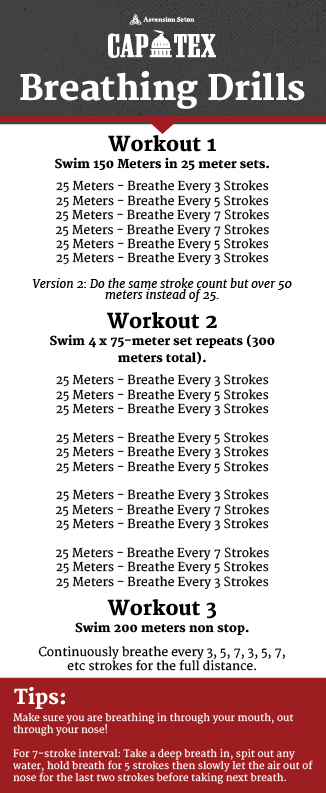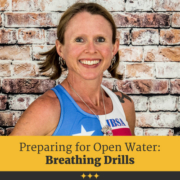Preparing for Open Water: Breathing Drills
You signed up for a triathlon and chances are you are probably doing 99% of your training in a swimming pool. Breathing can be a challenge for many swimmers, which can be exaggerated in open water where conditions may differ. Challenges with open water include turbulence, missing a breath due to waves, running into other swimmers, or starting off the swim too fast before realizing you haven’t taken a breath yet.
You can easily combat a lot of fear of open water swimming through simple drills while training in a swimming pool. Doing breath work will help prepare you for the uncertainties of open water. There is also the added benefit of oxygen capacity which can also help you on the bike and the run.
Our amazing ambassador and swim coach, Trisha Stavinoha, has put together 3 simple workouts that will improve your breathing and have you feeling calm and race-ready.
The“3-5-7”
I like to use this workout to help swimmers relax their breathing, improve their oxygen capacity and prepare them for missing a breath or two.
3-5-7 refers to how many strokes you take between breaths while swimming. This pattern requires you to use bi-lateral breathing.
Bilateral breaking means that you are breathing on both sides of your body. If you breathe only on one side, you can develop overuse injuries and have a lopsided stroke, as well as be more likely to veer to one side. This plus a current can really throw you off course requiring you to sight more which will cause your legs to drop and slow you down.
Bilateral breathing is step one in preparing you for breathing in open water. If you don’t currently breathe bilaterally, now is the time to start. Breathing every 2 strokes is too much and every 4 is not enough over a longer distance.
Here is your lesson…breathe on both sides starting with every three strokes. You will feel awkward the first couple of swims, but the following workouts will help. You can do these workouts as a warm-up or cool down to longer swim sets.
You can print the following workouts and laminate them so you have them by the pool during your swims.

Workout 1
This workout will get you comfortable taking longer times between breaths.
Swim 25 meters breathing every 3 strokes. For the next 25 meters breathe every 5 strokes. Then the next every 7 stokes. Then ladder back down 7, 5, 3 the same way.
Version 2: Do the same stroke count but over 50 meters instead of 25.
150-300 meters total (6 x 25 or 6 x 50).
Workout 2
This workout will help you learn to relax after missing a breath or catching your breath if you started off too fast.
Swim 4 x 75-meter set repeats (300 meters total).
For the first set, You will breathe every 3 strokes for the first 25 meters, then 5 for the second 25 meters, then back down to 3 for the final 25 meters. So we will call this 3, 5, 3 stroke workout. For the following sets, you will do the same but change your breathing pattern accordingly.
The second is every 5, 3, 5 strokes.
The third sight is every 3, 7, 3 strokes
The final set is every 7, 5, 3 strokes.
Workout 3
Continuously breathe every 3, 5, 7, 3, 5, 7, etc strokes for 200 meters non-stop.
If you are not ready for the 7-stroke interval of the workout, not to worry, but keep trying! Make sure you are breathing in through your mouth, out through your nose. When I do the 7-stroke interval I take a deep breath in, spit out any water, hold my breath for 5 strokes then let the air out of my nose for the last two strokes before I breathe in again.
With some practice and dedication, you’ll have these breathing drills mastered in no time, and be ready for the open water at your next triathlon.
Trisha Stavinoha, MS, RD, CSSD, CSCS
Masters Swim Coach
Surge Strength Dryland Coach











